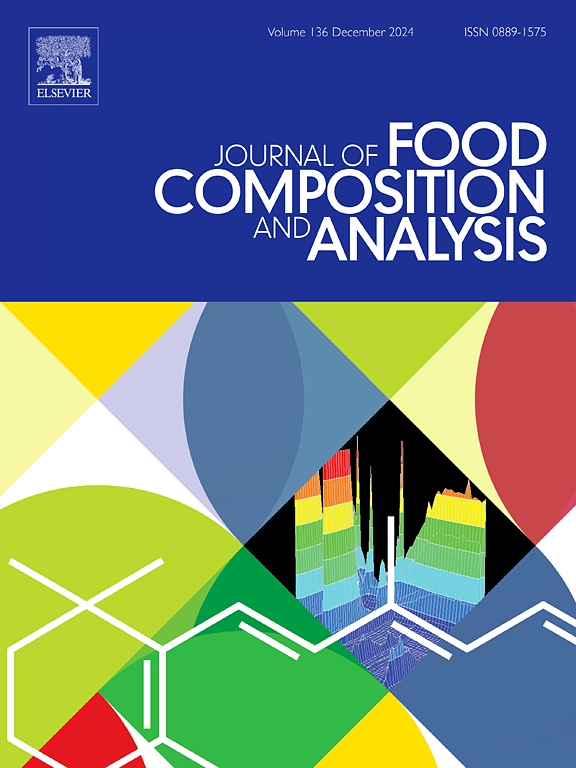Food authentication goes green: Element profile-driven differentiation between organic and conventional apple juices
IF 4
2区 农林科学
Q2 CHEMISTRY, APPLIED
引用次数: 0
Abstract
Apples and apple juice are among the most popular fruit products in Germany. Rising demand and comparatively higher prices for organically produced apples and apple juices make them susceptible for adulteration with cheaper raw materials to achieve higher profit margins. Therefore, sustainable experimental methods are required to detect such fraud regarding the cultivation method. Element profiling using inductively coupled plasma – mass spectrometry (ICP-MS) is such an experimental approach to distinguish between cultivation methods. Using an environment-friendly sample preparation strategy and a ratio-based evaluation approach in combination with a random forest classification model, it was possible to distinguish between the cultivation methods of processed apples from northern Germany with an accuracy of 94.2 % ± 2.3 %. The results were verified by analyzing samples from local supermarkets. Furthermore, the detection of admixtures of conventional juice to organic juice was studied using a regression analysis (5–50 % admixture). Admixtures could reliably be detected from a proportion of 20 % with a support vector machine regression model (R2: 0.8 ± 0.005, RMSE: 6.9 % ± 0.1 %). Thus, falsification of the cultivation method can be detected even in mixtures. The study shows great potential towards sustainability, reducing sample preparation time, hazardous chemicals and energy consumption.
求助全文
约1分钟内获得全文
求助全文
来源期刊

Journal of Food Composition and Analysis
工程技术-食品科技
CiteScore
6.20
自引率
11.60%
发文量
601
审稿时长
53 days
期刊介绍:
The Journal of Food Composition and Analysis publishes manuscripts on scientific aspects of data on the chemical composition of human foods, with particular emphasis on actual data on composition of foods; analytical methods; studies on the manipulation, storage, distribution and use of food composition data; and studies on the statistics, use and distribution of such data and data systems. The Journal''s basis is nutrient composition, with increasing emphasis on bioactive non-nutrient and anti-nutrient components. Papers must provide sufficient description of the food samples, analytical methods, quality control procedures and statistical treatments of the data to permit the end users of the food composition data to evaluate the appropriateness of such data in their projects.
The Journal does not publish papers on: microbiological compounds; sensory quality; aromatics/volatiles in food and wine; essential oils; organoleptic characteristics of food; physical properties; or clinical papers and pharmacology-related papers.
 求助内容:
求助内容: 应助结果提醒方式:
应助结果提醒方式:


